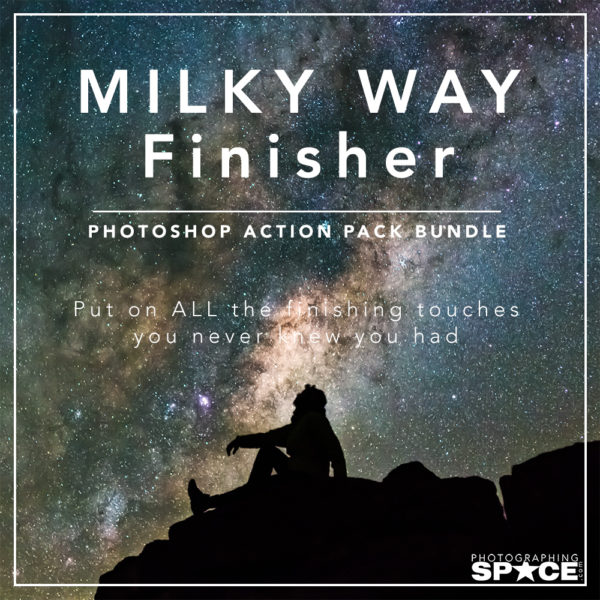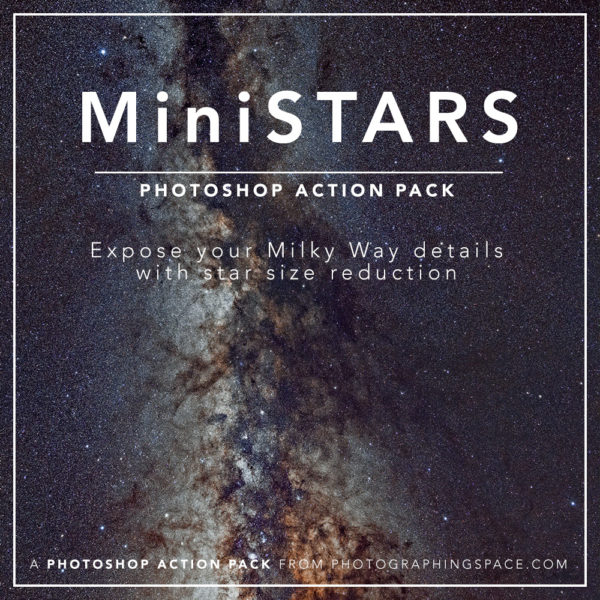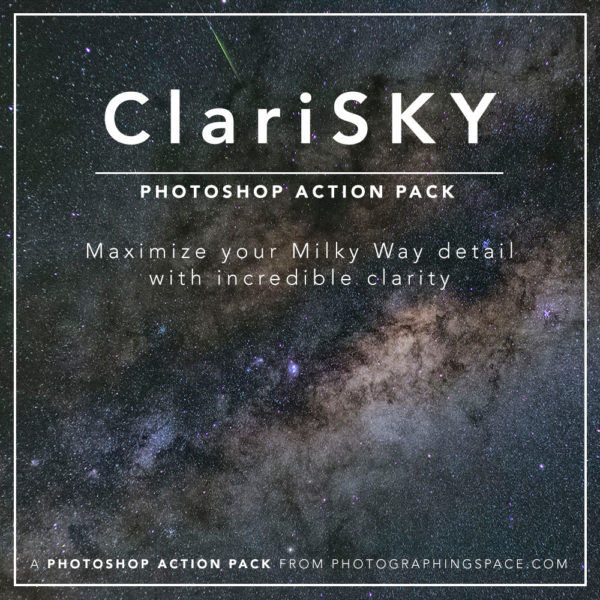Is it worth it to stack and process multiples vs. a single exposure?
I think so.
It’s more work, it takes more effort, but in the end the image quality you get from stacking multiple exposures can drastically improve your final product in multiple ways.
Reduce noise with reality
Stacking multiple exposures reduces noise by increasing the signal:noise ratio using reality. I like that.
But, what is signal and what is noise? It’s pretty simple — signal is the stuff (light) we want, noise is the stuff (camera sensor errata) we don’t want. One of the best benefits about stacking multiple exposures is the dramatic increase in the image quality, noise removal, by increasing your signal:noise ratio.
When you stack, you reduce the differences in the digital representation of the light that hits and excites the camera sensor. Each time you shoot an image, the electrical characteristics of the sensor cause it to do its best at representing the photons it “sees.” However, from shot to shot, there are slight brightness and color variations on each pixel for the exact same image. Image stacking produces an intelligent average of each pixel of all exposures, detail for detail, instead of trusting just one exposure and hoping it’s accurate. Sounds like a good idea to me.
|
This is a 200% zoom of a single 180-second Milky Way image, note how many stars are lost compared to the stack (right). |
This is a 200% zoom of five stacked 180-second Milky Way images (which include the single image on the left and four others.) |
Along with decreasing noise — you are also able to saturate your images to get more accurate color because you are boosting signal instead of boosting the noise.
|
Single cropped raw image of Omega Centauri. Look at the noise! |
18 stacked raw images of Omega Centauri, integrated in PixInsight. Less noise, more stars. |
I’ll let you compare for yourself. Below you can see an example of a single 180-second (tracked) Milky Way image, followed by a stack of 5 different exposures (180-seconds each). Both were post-processed a little differently from the same raw images, but after stacking, there was lot more data to work with.


How you do it
There are a few good software packages out there. Some are free, some are not.
I’d highly recommend PixInsight, it’s what I’d consider the gold standard — but isn’t free and it has a big learning curve. It’s worth it, though!
So, if you’re just starting out — give Deep Sky Stacker a try. It’s free and easy to use, and works pretty darn well, too. Once you have a TIFF image from your stacking in DSS, you can edit it with your favorite image processing application and tweak to your heart’s content. And the best part is, you know that what you’re working with is more accurate data than a single exposure.
Try it out!
Have I piqued your curiosity? I’ve got some homework for you, then!
Go download some of our data to play with and stack (or not stack) yourself, and share the results with me!











Is there any Mac friendly stacking software out there? Can Photoshop be used to stack images as well?
Technically you can stack in Photoshop, but it is a very repetitive, labour-intensive process, and the more images you’re stacking, the longer it’s going to take. Better to use one of the tools Cory mentioned to do all the heavy lifting for you. Beyond learning how stacking actually works, there isn’t really any value in trying to do it by hand because the stacking process follows mathematical algorithms. It’s not something you can tweak or adjust, or try to improve upon.
On my old slow laptop, stacking 20 images might take a minute (using the standard simple no-frills stacking options), but doing it by hand might take half an hour, if I don’t make any mistakes. It’s pretty boring, even as a learning experience!
Hi Elizabeth,
Yes — PhotoShop can be used to stack, in theory…but it’s not really worth your time.
On Mac, you can use a software package called Nebulosity (of which I believe there is a free trial). But other than that and PixInsight, there is a lack of Mac-native software.
I run a Mac as well!
Cheers,
Cory
this is obvious – but – what I did was to get parallels, buy windows. This is about $300 total, I think, then get Deep sky Stacker (free). You are in business. Yeah, it costs a bit, but you will use the virtual windows machine for other things. And Parallels is fast, and pretty bomb proof. Also kind of fun to prank your Windows friends, by starting a windows computer on one screen, moving to your mac screen and while they are watching, just swipe the screen, and voila, it is a windows machine.
Hi Phil,
Ah — yes. Or try VirtualBox — it’s free!
Cheers,
Cory
Hi, great article.
I’m making single-shots, just starting.
If you take multiple shots, I guess you need a following system, otherwise the stars will have moved, is that correct?
They are probably going to cover this in another post, but if you’re shooting wide-field images, you can actually get away with a static mount. Stacking tools have a feature called “Registration”, which analyses each shot and shifts it a bit so that the stars within them all line up exactly – you always do this before stacking because even the best tracking mounts have *some* mechanical give in them, so you can’t trust that the alignment will be perfect.
So what I’ve done in the past is to not try to track at all, and then abuse the registration tool to bring it all back in line.
If you decide to buy a star tracking mount I am getting good results with the Ioptron Star Tracker….its $299…. I can get 2 minute exposures at 75mm with zero drift…I havent tried longer exposures yet
Thank you very much for this useful info, Rodney!
Hi Robert,
Allen is right, for wide-field work you do NOT need to track if you shoot short-enough exposures (see https://www.photographingspace.com/perfect-stars-rule-of-500/). And if you remove the landscape from the equation, you can stack these short exposures to obtain a better result.
Stay tuned to our website and social media in the coming days, because I actually shot a couple of sets of static-tripod Milky Way images to share with everyone to play around with this method on my data. I’ll share links to download them soon!
Cheers,
Cory
Yeah 100%, tried this method and its shocking the amount of detail you can get. I only had an APS-C sensor which isnt great with noise but using the stack method allowed me to get better shots than those who had full frame. Now that i have full frame i STILL will use stacking!
Great article Cory!
Hi Alex,
Thanks — and yes, stacking can be amazingly helpful!
Cheers,
Cory
Brilliant article!! NICE!!!!
I use another free method:
Copy the file over multiple times (+-10 Copies of the same file)
Open the 10 files in StarStax and run it (same way as which you generate star trails).
I figure it doesn’t get the same results as PixInsight, but hey beggars cannot be choosers
What is your opinion around it?
Thank Johan,
Good idea — however, in practice copying the same file wouldn’t decrease noise, because the pixels in each file are all the same, to there is nothing to “average” out. Also, StarStax doesn’t do an average of the pixels, it just chooses the lightest pixels from each exposure for their blending. Since they all images input are the same, the output will be the same as the input.
Instead, for free — I’d highly recommend giving DSS a try! (unless you’re on a Mac…)
Cheers,
Cory
How do you stack astrophotography pictures tho? If by using a 30 second shutter you can already tell some star tracks. By taking one 20 second picture, and another 20 second picture the second one would be slightly shifted, the stars would’nt match the same spot on the image. Is there a trick that you didn’t mention, or does DSS do this fix for you?
Hi Helder
DSS and most other stacking packages will fix this for you, through a process they call “Registration”. They look at each individual shot and find the brightest stars, then shift the entire image in whatever direction is needed to make them line up exactly.
Hello Helder,
Allen is correct. The specialized astrophotography software, like DSS, automatically analyzes and aligns each image for you before it averages out the pixels. Most often called “star alignment” or “registration.”
Cheers,
Cory
Great articles! Thanks for all the info – so far I think I’ve bookmarked about 4 or 5 pages from here to read up on. Just starting out on night and start photography and have learnt a WEALTH of info in a few short reads already – especailly ‘The 500’ rule – thanks again…really appreciate the info!
Hi Greg,
Awesome! So happy we can be helpful for you!
Cheers,
Cory
hi, i’m trying to understand how does a 180 second exposure doesn’t give you any streaks in the stars?
Hi Yaniv,
It was taken on a tracking mount, the same as you’d use for a telescope. You can shoot long exposures that way!
Cheers,
Cory
Different exposure meaning same settings but different ISO?
Hi Asif,
No, in this case, by “different exposure” I mean a different, subsequent, photo with all the same settings.
Cheers,
Cory
I’m after some help please. I’m new to stacking and have been going through step by step photoshop youtube video’s. I have 21 single images at 20 seconds exposure. When the stacking process has finished, the result is a photo with less noise and less stars. So much so it looks like a blurry photo. My camera was attached to a tripod and the photos were taken in the same spot. On youtube this doesnt happen. I’ve followed several videos and asked on facebook pages but no one can seem to provide me with any idea why its happening.
Thanks in advance
Hi Colleen,
Without seeing your photos, I can give you this advice:
1. Check each individual exposure before stacking, and discard *any* photos that are not in perfect focus or are flawed in any way. You only want to stack the *good* photos.
2. It is possible that your images are not aligned prior to stacking (integrating, etc.). The stacking software you use should be performing a star alignment process on each photo prior to stacking so that the features in the photos line up.
I hope that helps and you are able to sort out your issue!
Cheers,
Cory
You took 5 180 seconds shot of the Milky Way. After 900 seconds of shooting, the stars should have shifted due to the rotation of earth. Why are the stars not blurred?
OK, you use some sort of equatorial mount. Well then, it’s not just stacking. I have to invest some $$$ before stacking.
Hi David,
In that case, yes, I used a tracker.
BUT, if you shoot shorter exposures on a static tripod and stack, you will also get a huge benefit of increased signal-to-noise.
Cheers,
Cory
I don’t get the point of these comparisons. Why not show 5 stacked 180 second images against a single 5×180=900 second image. Of course more exposure will get you more light but the question is what the benefit will be of taking individual images for integrating over a longer period of time on the sensor.
[…] your signal-to-noise in astrophotography, and why should you try it tonight? With more frames, the noise reduction you gain is proportional to the total signal collected, making faint features more accessible. When […]